Search Results
Fine Jewelry University Articles matching: “Split Shank Ring”
Showing only FJU Article results. Click here to show all results.
Fine Jewelry University (Show All FJU Articles)
-
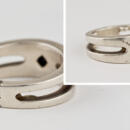
Jewelry Solder: What You Should Know
Solder is the unseen “glue” that holds most jewelry together. If you have ever had a ring sized, a chain repaired, or your wedding set joined together, you have very likely seen solder in action. But, what … will focus our discussion on gold jewelry, but the same concepts also apply to silver and platinum as well. If your ring is made out of 14 karat gold, you know that approximately 56% of it is gold with the rest being made up by a variety… solder? With solder a different set of alloy metals are used than with regular karat gold with the purpose of lowering the melting point of the finished metal. These metals–usually zinc, cadmium, tin or indium–all have low melting points…
-
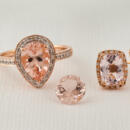
Gem in the Spotlight: Morganite
…. Compared with many other gemstones, Morganite is a relatively new addition with its first recorded discovery occurring in California in the early 1900s. This means you won’t find any tales of ancient kings wearing Morganite on their … believe it to be a powerful stone which facilitates the flow of energy throughout the body due to its ability to bring pure love to the wearer. Morganite is also believed to balance emotions and bring harmonizing fulfillment as it …
-
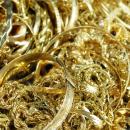
Gold Purity and The Differences Between White and Yellow Gold
Gold, just the word brings to mind value, rarity, wealth, beauty and jewelry. But what is gold? Yes the scientists tell us gold is an element …Gold is a beautiful metal that is used to make timeless jewelry. Gold can be bent and molded into elegant engagement rings to show the eternal affection of one person to another. Gold is an expression of love. Gold Purity Is all gold the …of jewelry is pure gold or solid gold or 24 karat gold, but what does it all mean? Gold used in jewelry like wedding rings can come in many forms. Basic to understand the uses of gold in jewelry is karat. Karat with a K is the purity of …
-

How Are Lab Grown Diamonds Made?
…. There are three basic manufacturing processes used to make HPHT diamonds: the belt press, the cubic press, and the split-sphere (BARS) press. The goal of each process is to create an environment of extremely high pressure and temperature…technology has been constantly advancing. Belt press designs have been dramatically scaled up, more modern cubic and split-sphere presses have been introduced which are more efficient, and larger, more perfect gems are being produced. As …
-
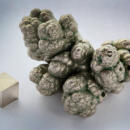
What to Do When Your Ring Irritates Your Skin
Nothing is more frustrating than being unable to wear your engagement ring or other jewelry because it irritates your skin. Don’t worry. There are many options you have when faced with this …but their root causes and solutions are very different. Physical Irritation This can be caused by the design of the ring, a rough area that is the result of normal wear and tear, or a ring that is not sized correctly. If the ring is too … irritation and the solution may simply be to size the ring up slightly. Likewise, if there is a rough spot on the ring, that can normally be smoothed out by a jeweler. Changes in diet can dramatically affect our finger sizes. So, if the …
-
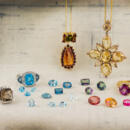
Gem in the Spotlight: Topaz
…: 8 Care and Cleaning Even though it’s tough to scratch, you should protect your topaz from hard knocks. It can be split with a single sharp blow, a trait it shares with diamond. Clean with mild dish soap; use a toothbrush to scrub behind …
-
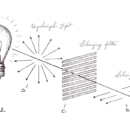
The Magic of Polarized Light
… unique chemical structure, actually polarize light themselves. These gems are doubly refractive (DR) and they will split incoming light in multiple directions. Some common examples of doubly refractive gems are sapphire, tourmaline, and … with singly refractive (SR) gems like diamond that only bend light in one direction. Gemologists use the term birefringence to refer to how doubly refractive a particular gem is. By far the most common use of polarized light in gemology …
-
Frequently Asked Question about Jewelry
… others waited until over 50 years. The reasons to redesign range widely: the ring is worn out (it would need a new shank and all new heads), the style is not right for me now, or, the very popular reason, going bigger/upgrade time. Does … professionals must keep up with current advancements in the field. The pace of change in the gem industry is staggering. What is Moissanite? Moissanite is lab-created silicon carbide. It has become an excellent diamond imitation since it…
-
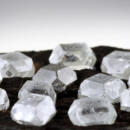
Is a Lab Grown Diamond Right for Me?
Picking a diamond for your engagement ring is a big decision. For most of us, buying a diamond is a significant financial undertaking, and we want to get it … are conflict free, and you can buy verifiable Canadian diamonds of known origin if you want), it is still reassuring to know that with lab grown diamonds, you can be totally confident that your diamond did not support wars or child labor… economy of the host country. Often times, these countries are impoverished, and the jobs and income that the mine brings can help elevate many people out of poverty. Lab grown diamonds are not one-of-a-kind in the same way that natural …